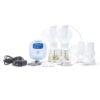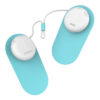How to get a feel for breastfeeding!

How to get a feel for breastfeeding!
In our systems-oriented world, it’s easy to override our instinct
Here’s how to get the “feel” for breastfeeding.
There are some things in life that are best learned by tapping into our left-brain, the analytical, rational hemisphere. It’s there that logic guides, studying sequentially facilitates learning, and rules rule. Then there is the right brain, more holistic and intuitive way to learn. Some things you process best by intellect, others by experience. Which brings us to breastfeeding.
There are countless articles and books and websites that explain everything you need to know to breastfeed, instruction that ignores the fact that breastfeeding is an interactive experience, dependent on communication between you and your baby. It’s not a matter of placing Point A (baby’s mouth) over Point B (mother’s breast) and commencing breastfeeding. Rather it’s more like a dance that engages the whole body. Each breastfeeding couple sets its own rhythm and pace.
Mothers and babies have physiological responses that draw them to each other, that encourage them to look at each other, touch each other, and interact. Much of this behavior is guided by the right side of the brain.
It’s time to take a right-brain perspective on breastfeeding.
How exactly do you use a right-brained approach to learning to breastfeed your baby? First, take some deep breaths and let go of those worries about doing things “wrong.” Instead of thinking of breastfeeding as a skill you need to master, or a measure of your worth as a mother, think about breastfeeding as an expression of your relationship. As you spend time with your baby, you’ll be more adept at reading her cues. As you hold her, your baby will be more comfortable seeking your breast.
Breastfeeding will flow naturally out of your affectionate relationship. And your body dynamics can make breastfeeding easier or harder. Here are some specific things you can do to help:
Watch for early feeding cues. These cues include turning her head when someone touches her cheek and hand-to-mouth. Take note of when she starts smacking her lips or putting her hands to her mouth. This is an ideal time to try breastfeeding.
You may not always catch your baby in the early hunger stages (such as when you’re sound asleep!) and may sometimes have to deal with a baby who is upset. Also, some babies go from a little hungry to very hungry very quickly. If you need to calm your baby, offer the breast. If this doesn’t work, don’t force the issue. First, soothe your baby by holding, swaying, rocking, or walking. Then try these suggestions:
- Lean back in a comfortable position. Semi-reclined positions in which your back, neck, shoulders, and arms are well-supported are sometimes referred to as laid-back. breastfeeding. These may be the same position you use to watch your favorite TV show.
- Lay your baby, tummy down between your breasts. Your baby can be either dressed or stripped down to her diaper. Then make your breast accessible. Your chest is a very calming place for your baby. She can hear your voice and your heartbeat. She can smell you and get the feeling of your skin. Talk with her and make eye contact to bring you closer to your baby.
- Follow your baby’s lead. When a calm baby lies tummy down on her mother’s laid-back body, this triggers instinctive feeding behaviors such as head-bobbing and movements toward the breast. If she is lying between your breasts, she probably won’t need much help. Encourage her with your voice. Babies can’t understand your words at this age, but they can understand your tone of voice. And feel free to touch and stroke her as the spirit moves you.
Play while you learn to breastfeed. Rather than worrying about doing things wrong, focus on your relationship with your baby and think of breastfeeding as a part of this larger whole. Breastfeeding often flows naturally from this attitude. Sometimes your baby may try to take the breast even when she not really hungry but just to try out this new behavior. Practice times are good and will help her breastfeed better when she is hungry.
Adapted from the book Breastfeeding Made Simple: Seven Natural Laws for Nursing Mothers by Nancy Mohrbacher, IBCLC, FILCA and Kathleen Kendall-Tackett, PhD, IBCLC





